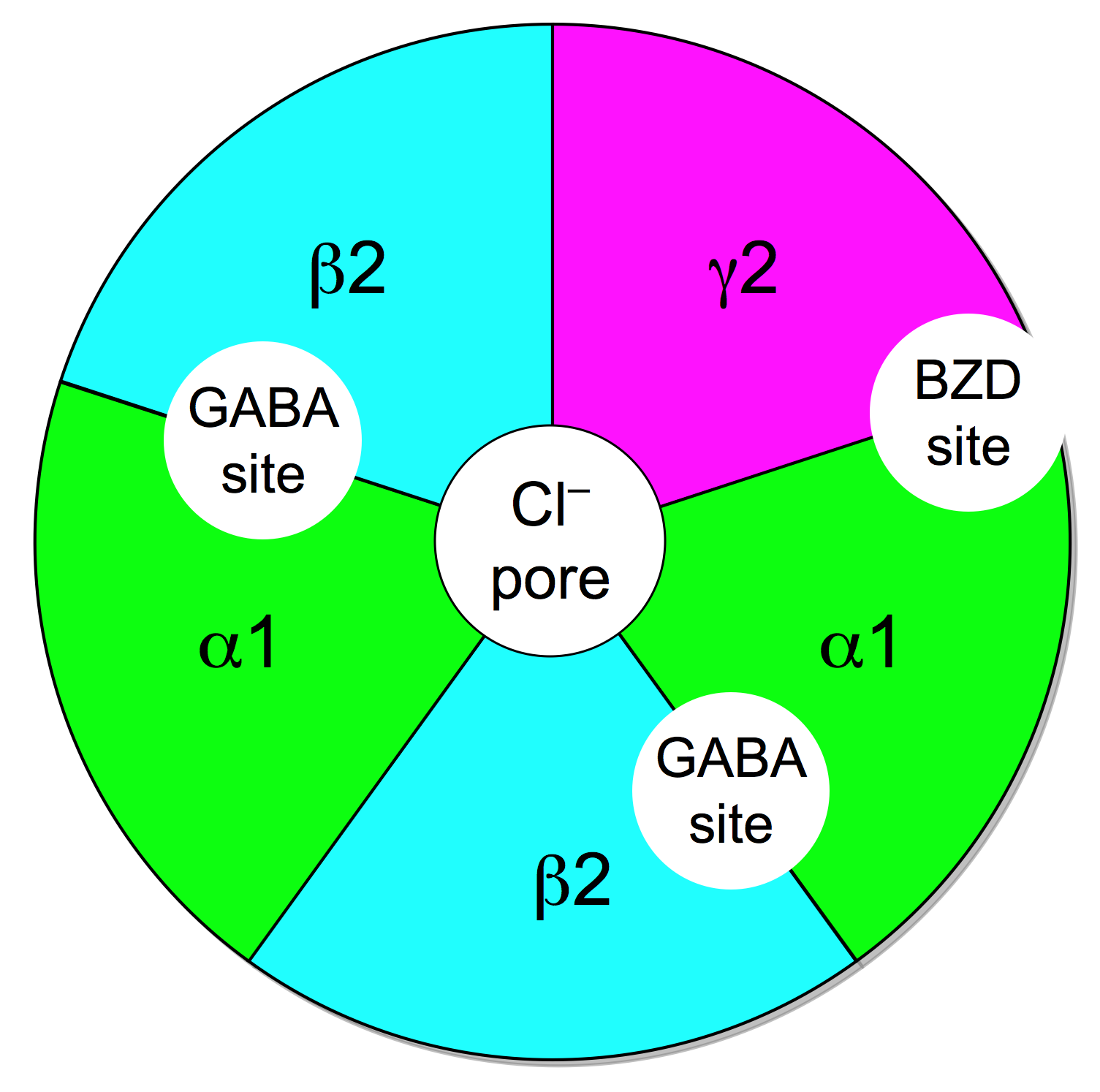GABA |
|
Gamma Amino Butyric Acid (GABA) is the main inhibitory neurotransmitter in the CNS. It is synthesised from glutamate, is present in about a third of all synapses, and can be found in all areas of the CNS. As an inhibitory transmitter it hyperpolarises the cell membrane of the neuronal cell body. In some situations GABA also has a presynaptic action - on synaptic boutons. GABA receptors GABA binds to members of two families of GABA receptor- GABA-A and GABA-B. GABA-A receptors are ligand gated channels that operate by allowing chloride ions to cross the neuronal membrane using its electrochemical gradient (normally abiut -65mV). Generally speaking, this causes hyperpolarisation the cell membrane. However, there are certain situations in which GABA-A receptors depolarise the neurone, causing excitation rather than inhibition. This happens when chloride concentration within the neurone is raised, and this is known to occur during development of the CNS. Adult neurones maintain a lower intracellular chloride concentration. GABA-B receptors are metabotropic receptors and operate by activating G-proteins which in turn inhibit the activity of the neurone. Because of the more complex pathway, G-protein mediated events are slower than ion channels |
The GABA-A receptor consists of 2 alpha, 2 beta and a gamma subunit. The diagram shows the sites of interaction with GABA, and the site of action of benzodiazepines (BZD). |
Synthesis and Removal of GABA at synapses. Top At GABAergic synapses, glutamine taken up by neurons is converted to glutamate, which is then metabolized into GABA by glutamate decarboxylase. Upon release, GABA is taken up into astrocytes via GABA transporters and then broken down into succinate, which can be used in the synthesis of new glutamine molecules. Some GABA is recyled by transport back into the neurones themselves. GABA receptors are divided into two types A and B. Actions of Benzodiazepines on GABA-A receptors Some GABA- A receptors bind benzodiazepines which increase the affinity of the receptor for GABA, and enhances the inhibitory effects of the neurotransmitter. The sedative and anti-anxiety actions of benzodiazepines are explained by this mechanism. |
|


